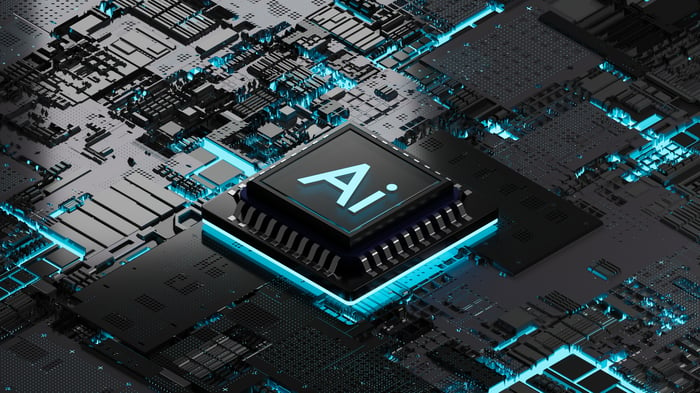As two heavyweight contenders in the chip industry, Nvidia and Advanced Micro Devices have been engaged in a fierce battle for dominance. Over the last five years, both companies have showcased commendable performance. Advanced Micro Devices (AMD) has seen a remarkable rise of over 433%, a feat that pales in comparison to Nvidia’s monumental stock surge of over 3,000% during the same period.
While Nvidia has emerged as the stronger stock in the past half-decade, the burning question remains – which of these semiconductor giants is poised to outshine the other in the next five years?
A Clash of Titans: Nvidia vs. AMD
The current landscape, characterized by the burgeoning development of artificial intelligence (AI) infrastructure, offers a lucrative environment for both companies. The soaring demand for graphic processing units (GPUs) required for large language model (LLM) training and artificial intelligence inference propels both Nvidia and AMD forward. Nvidia’s data center segment, in its fiscal 2025 Q1, witnessed a remarkable year-over-year revenue surge of 427%, summing up to an astounding $22.6 billion. In contrast, AMD’s data center division experienced a robust revenue growth of over 80% in the same quarter, reaching $2.3 billion.
Nvidia has undeniably established itself as the champion of the AI chip domain, with its data center segment generating nearly ten times the revenue compared to AMD’s counterpart. Leveraging its CUDA (Compute Unified Device Architecture) software platform, Nvidia’s GPUs have captured a lion’s share of the market, claiming over 80% dominance. This strategic advantage has fortified a solid moat for Nvidia’s GPUs, making them the preferred choice for developers.
Despite Nvidia’s stronghold, AMD’s data center segment continues to showcase impressive growth, as its GPUs emerge as a dependable alternative to Nvidia’s constrained supply. Diversification is key for enterprises, as evident from Microsoft’s recent move to integrate clusters of AMD’s MI300X chips in its Azure cloud computing service as a viable Nvidia substitute. Moreover, AMD’s ambitious plans to construct an AI cluster with over a million GPUs signify a substantial opportunity for growth if materialized.
While Nvidia predominantly thrives on its GPU products and data center division, which account for 87% of its revenue, AMD’s data center segment contributes to a mere 43% of its total revenue. Though this diversification shields AMD from potential setbacks, other segments struggled, limiting its overall year-over-year revenue growth to a modest 2%, contrasting sharply with Nvidia’s impressive 262% growth.

Image source: Getty Images.
Deciphering the Prime Pick
Despite Nvidia’s stellar stock performance, both companies presently boast similar forward price-to-earnings (P/E) valuations. Nvidia’s forward P/E stands at 45.6, slightly nudging past AMD’s 44.8.
Given these comparable valuations, the looming question of which stock holds a brighter future pivots on operational performance. AMD’s modestly sized data center segment positions it as a key contender to seize market share from Nvidia. Embracing the role of an alternative GPU source could pave the way for continued segment growth.
Peering into the future, AMD’s gaming sector, which has previously lagged, anticipates a substantial revival by 2027 or 2028, coinciding with Microsoft’s projected launch of its next-gen gaming console, and Sony’s plans for the PlayStation 6 release.
Reflecting back to 2022, AMD amassed nearly $3.8 billion in revenue from the Sony PlayStation 5 (PS5), constituting 16% of its total revenue. Typically, console sales peak in the third year post-launch, painting a favorable outlook for AMD.
On the flip side, Nvidia enjoys a robust moat sculpted by its CUDA platform, which spells convenience for developers already attuned to its system. While it’s a costly and time-consuming process for developers to adapt to other GPUs, Nvidia’s lead remains solidified.
Conversely, AMD’s aggressive stride towards innovation shines through the development of next-gen architecture GPU platforms compatible with existing structures. This strategic move is poised to ignite substantial demand from clientele seeking cutting-edge AI capabilities.
If we gauge the AI landscape as still nascent and the data center expansion in its infancy, Nvidia emerges as my preferred pick given the substantial moat it has erected. Nonetheless, AMD stands as a promising investment prospect, especially with the impending rejuvenation cycle of gaming consoles in the imminent years.
Contemplating an Investment in Nvidia
Before diving into Nvidia’s stock, contemplate this:
Analyzing the Omission of Nvidia in the Top Stock Selections
The Exclusion of Nvidia
Among the 10 best stocks recommended for investors, Nvidia did not make the cut. The selected stocks are anticipated to yield significant returns in the near future.
Historical Context
Reflect on the instance of Nvidia’s absence from this listing back in April 15, 2005. If one had followed this advice by investing $1,000 at the time, the returns would have soared to an astonishing $757,001!
Stock Advisor Service
The Stock Advisor service offers investors a comprehensive roadmap towards success, outlining portfolio construction strategies, regular analyst updates, and two unique stock recommendations monthly. Noteworthy is the fact that the service has achieved over a quadruple return compared to the S&P 500 since its inception in 2002.
Unveiling the List
Curious about the 10 highlighted stocks? Explore the full selection to grasp the potential investment opportunities.
Insightful Returns
*Stock Advisor returns data is up to June 24, 2024, offering insights into the historic performance of the recommended stocks.

